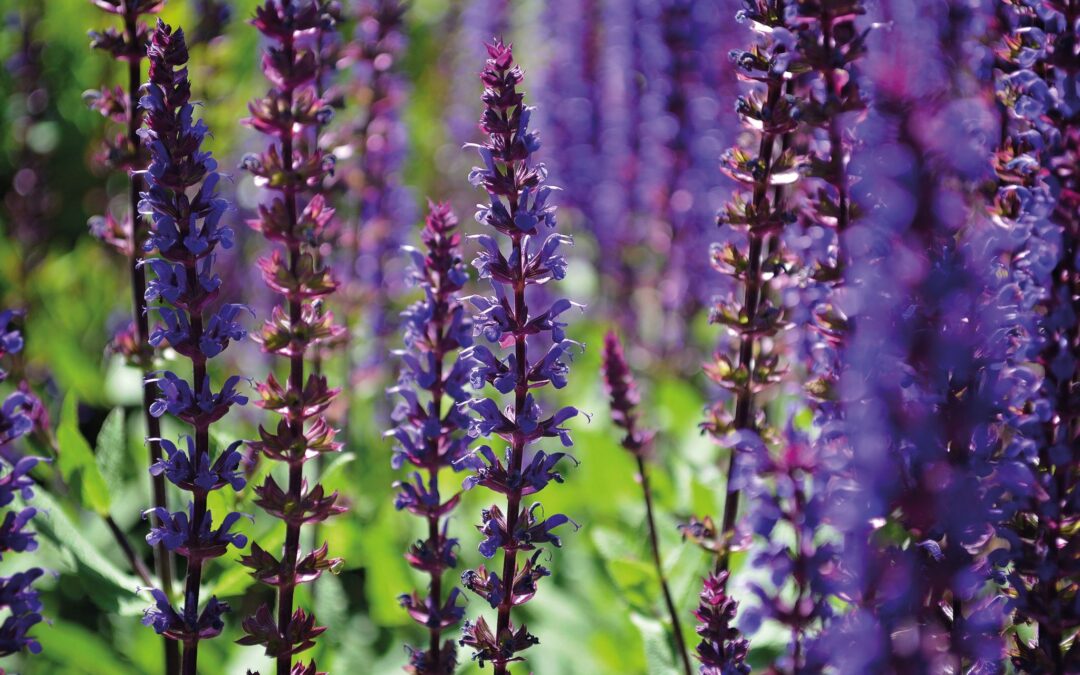The genus is huge and varied and contains more than 700 species. Culinary sage, Salvia officinalis, is a useful herb but also looks good in the border, especially the purple variety. But there are thousands more salvias to choose from in a multitude of colours. Native to the Americas, Europe and Asia, they tend to cope well with dry conditions and go on flowering into autumn.
There are the shrubby Mexican group which have a woody framework and include Salvia ‘Hot Lips’ as well as newer bicoloured varieties such as ‘Amethyst Lips.’ These salvias have the biggest range of colours from pinks and purples such as the dusky S. ‘Nachtvlinder’, to pure white, peach and yellow such as delicate S. ‘Lemon Light’. There are also lots of lovely blues such as S. ‘Sky Blue’ and ‘So Cool Blue.’ ’Most salvias like a free draining soil and sun, but the shrubby Mexicans which have small leaves are particularly drought-tolerant and can cope with a lot of sun and dry impoverished soil. They can suffer in severe frosts.
Keep shrubby Mexican salvias in a tight bush by pruning them back in mid-April by around a half but make sure you don’t cut down below the new growth. In mid-summer, as well as taking off spent flower heads, you can give shrubby Mexicans a ‘Hampton hack’ by taking a third of the height off the plant to tidy them up and increase the amount of flowers for later in the season.
Popular salvias such as S. nemerosa ‘Caradonna’ and other ‘cousins’ such as S. nemerosa ‘Sensation Rose’ and S. nemerosa ‘Amethyst’ are the European salvias. They do cope better with moisture retentive soil such as clay but may still need added grit or organic matter for improved drainage. Cut back in early summer for late flowering, or remove the flower heads as soon as they’ve finished.
Half-hardy salvias include the very tall and striking S. guarantitica ‘Amistad’, which has stunning large dark purple flowers that go on into autumn, and the more unusual pinker S. ‘Amigo’. S. guaranitica ‘Blue Enigma’ and S. ‘Black and Blue’ are also lovely. Keep the flower stems in autumn and winter, to protect the rootball and developing shoots from frost. Protect from frosts and prune the dead stems to ground level only after new growth has emerged in mid to late April, or mulch over the crowns. These salvias cope with a little shade and richer soils.

